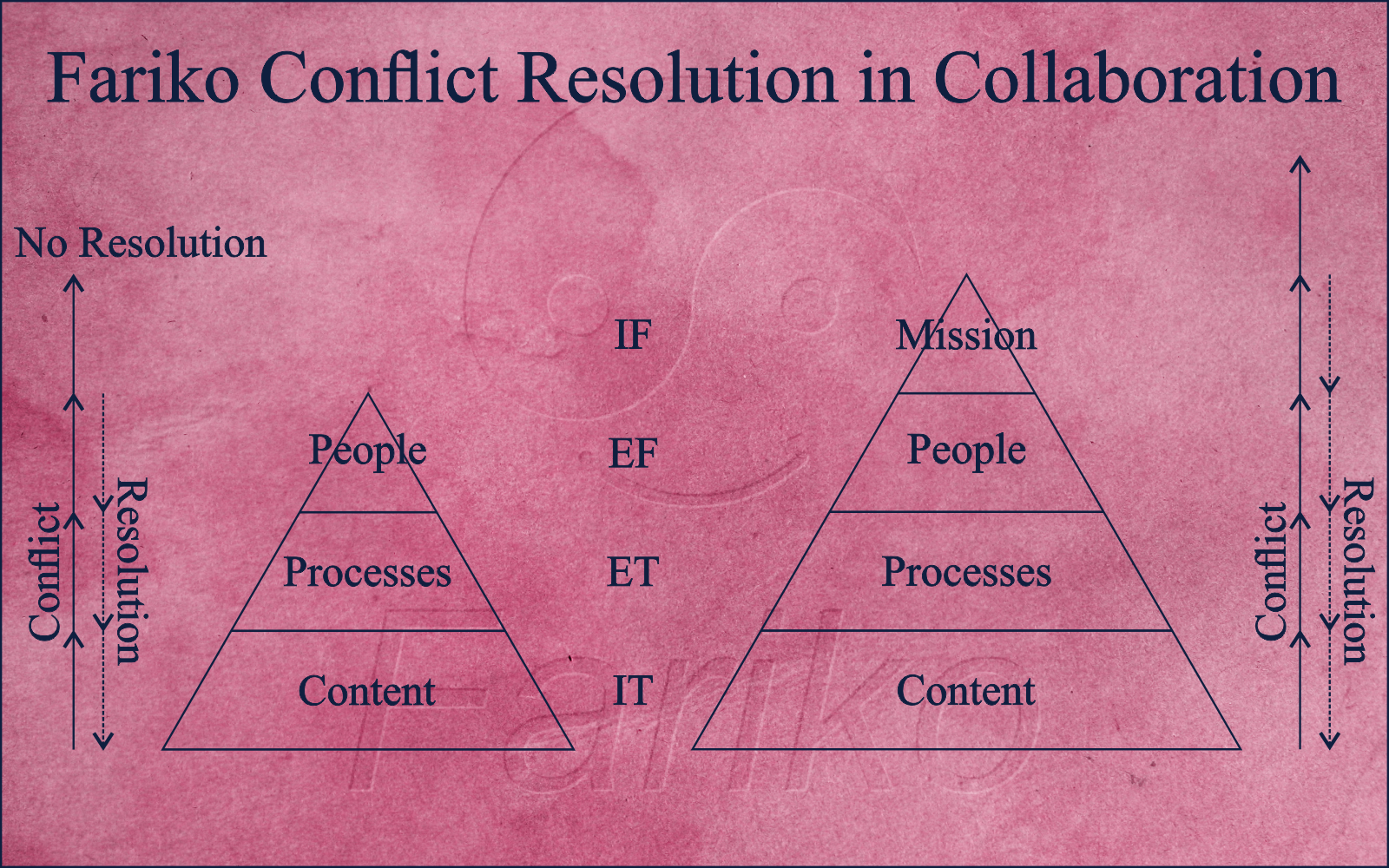For many years, I used a tried-and-true three-layer model for conflict resolution. Most of the time, it worked well. When a conflict arose, I started at the content layer, addressing facts, figures, or concrete tasks—where disagreements often begin. If we couldn’t reach consensus there, I moved to the process layer, focusing on clarifying how we worked together. If that didn’t help, I turned to the relationship layer, addressing emotions and repairing trust. This system served me well for years, helping me resolve conflicts in teams and projects.
Yet, there were times when I hit a wall. Especially when conflicts stemmed from deeper personal differences, such as clashing values or fundamentally different ideas about why we were working together. No matter how empathic or structured I tried to be, addressing the content, processes, or relationships wasn’t enough to truly restore collaboration. At times, the tension lingered, and I realized it was affecting not only the quality of my work but also my relationships with colleagues.
The Breakthrough: The Mission as the 4th Layer
As an MBTI professional, I decided to examine the three-layer model through the lens of MBTI. I began analyzing the layers using the logic of IT, ET, EF, and IF, which for me represented different dimensions of collaboration and conflict:
- IT (Content): Logic, facts, and tasks.
- ET (Process): Structure and methods.
- EF (People): Relationships and empathy.
- IF (Mission): Introspection and meaning.
As I worked through this analysis, I noticed something. The three-layer model ended at EF, the layer of relationships. But what if there was another, deeper step? What if a fourth layer existed that delved into why we collaborate? The answer lay in IF: the mission, the larger goal that brings us together.
I began applying this fourth layer—the mission—in my work, and I noticed the difference almost immediately. By reminding everyone involved of the bigger goal we were trying to achieve together, we were able to take a step back and view the conflict in a broader perspective. Suddenly, it was no longer about who was right or whose method was better but about how we, as a team, could contribute to a greater purpose.
A Practical Example
I recall a conflict in a project team I was leading. Two colleagues were having a heated discussion about how to approach a marketing campaign. One felt the numbers (content) didn’t add up, while the other insisted the timeline (process) was already set. Frustrations escalated to the point where it became personal, with accusations of lack of effort and respect flying back and forth.
At first, I used my usual approach: we reviewed the facts, redefined the processes, and had a challenging conversation about their relationship. But the conflict still simmered.
That’s when I decided to introduce the new layer. During a team meeting, I brought up the project’s mission: “What are we trying to achieve with this campaign, and why is it important for our company and our customers?” The tension in the room almost instantly eased. Both colleagues aligned themselves with the larger goal and began discussing how, despite their differences, they could each contribute to the success of the campaign. The atmosphere improved, and the team worked together better than ever.
The Long-Term Impact
Since adopting this fourth layer, I’ve noticed that my relationships with colleagues have grown stronger. By addressing conflicts not just in terms of content, processes, or relationships but also by connecting to a shared goal, my teams have become much more resilient. Where tensions might once have lingered, I now see people understanding and appreciating each other better, even when they don’t always agree.
For me, discovering this 4th layer—the mission—has been more than just a new step in conflict resolution. It’s become a way to collaborate more deeply and meaningfully. It has helped me not only resolve conflicts but also build lasting relationships and stronger teams.
The Moral of the Story
Adding the 4th layer from the MBTI perspective taught me a crucial lesson: even with someone fundamentally different from me, I can still collaborate effectively if we remain connected through a shared mission. The mission transcends personal differences and shifts our focus to what unites us. As a result, conflicts are not only resolved but also lead to deeper understanding and better collaboration.
For more info on MBTI go to https://www.fariko.com/mbti
